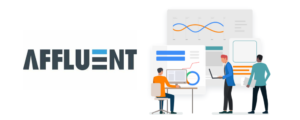Affiliate Marketing Tips & Guides
All the knowledge you need to launch and manage a successful affiliate program

How To Make Your Affiliate Program Stand Out
The recent pandemic, the closure of many high street stores and the rise of direct to consumer brands have all contributed to an influx of

Why Affiliates Aren’t Promoting You
There comes a time with every affiliate program whereby you get inactive publishers. By this, I mean affiliates who may or may not have driven

How to Recruit Affiliates Using Google
Everybody knows Google is big, but how big is it exactly and can you use it to your advantage when trying to recruit new affiliates?

Maximising Seasonal Affiliates for Your Brand
Everyone reading this is probably fully aware of how shopping online increases before Christmas. This holiday season is not anything new for retailers. Seasonal periods

Is Affiliate Marketing Profitable for Brands?
Like with all digital channels, we must have a full view of our affiliate marketing costs. That way, we can analyse if the channel is

21 Reasons Affiliate Marketing is Important
Potentially having a touchpoint across multiple digital channels, affiliate marketing has become incredibly important to companies online. Over 80% of brands and 84% of publishers

Affiliate Marketing Stats | 2021
The affiliate industry is thriving. In 2020, the COVID-19 forced retail activity online and advertisers and publishers alike took advantage. Previously, there may have been

What Sales Mix Can Brands Expect From Affiliates
A typical question I get asked from new affiliate programs or those in their infancy is the sales mix expectation. What sales mix do I

Affluent Review 2021 | Affiliate Reporting Tool
Table of Contents Want to know if Affluent is the right affiliate reporting tool for your program? Read our detailed Affluent review. What Is Affluent?
